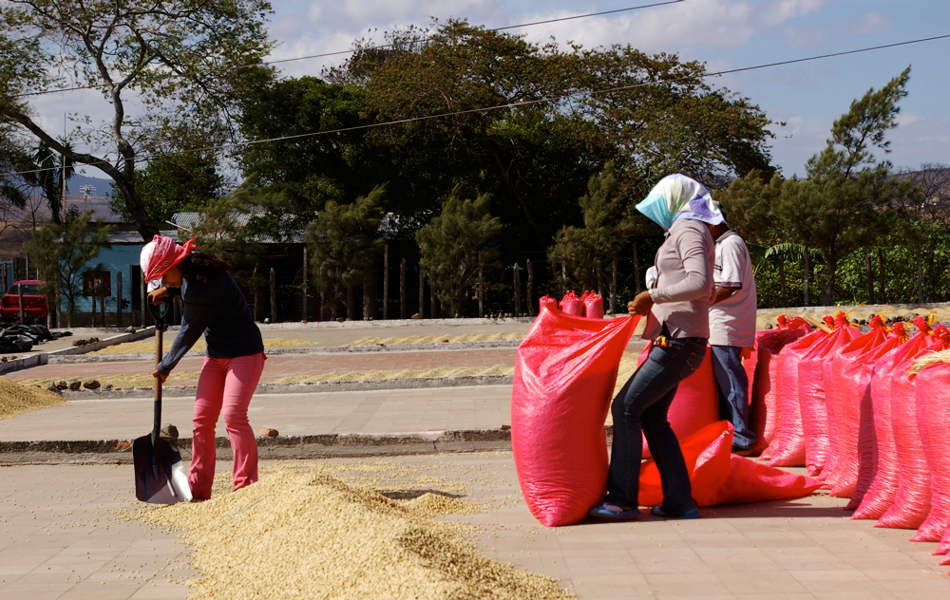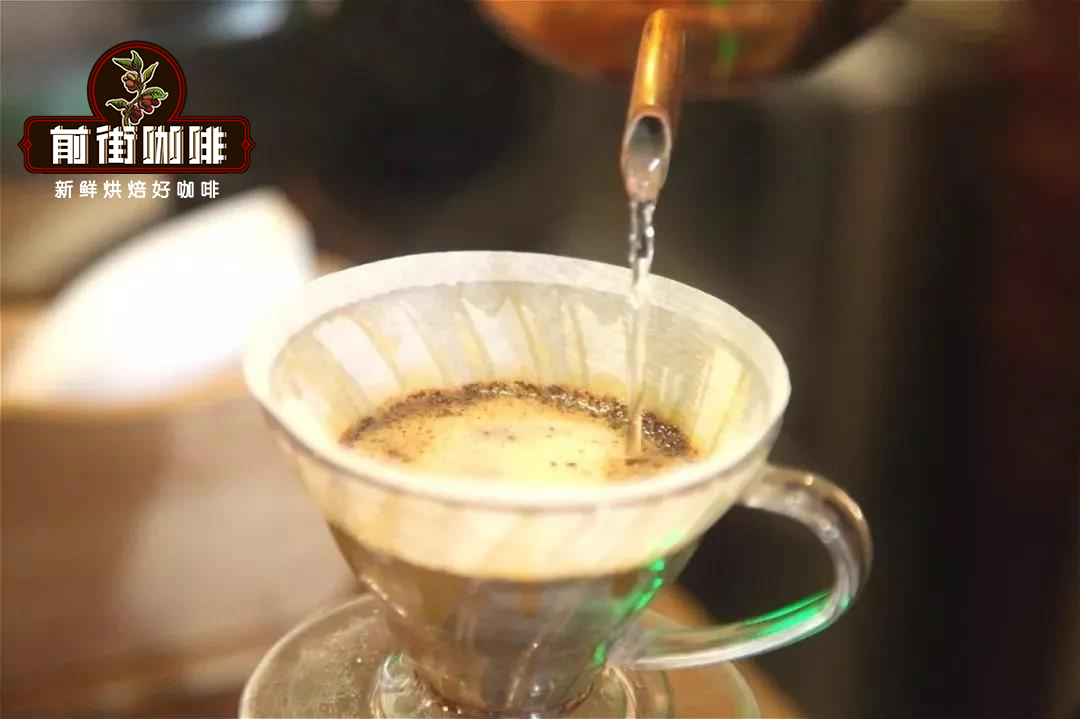Visit the coffee farm in Nicaragua to witness the process of coffee planting, picking and processing in Nicaragua.

For professional baristas, please follow the coffee workshop (Wechat official account cafe_style)
Select excellent seeds
"all the trees on this hillside can be picked. Remember to choose the branch that stretches in the middle of the trunk and the fuchsia ripe fruit that grows in the middle. " In the early morning of the next day, I was still getting used to jet lag. When I was half dreaming and half awake, listening to the translation, "in the middle and in the middle", can't you pick the red one? It turns out that the fruit we picked is reserved for seed. In order to retain excellent descendants, selection has begun from the fruit harvest stage.
It takes three years for a coffee tree to be sown and first harvested. In order to ensure that each seed can produce strong and high-yielding seedlings, farmers will choose the most potential fruit as the seed. They grow in the middle of the main trunk, and the fruit in the middle of each branch theoretically absorbs the most nutrients. Being able to survive on the tree to purplish red means that the fruit is healthy and has a more complete core.
"what you have to do after that is the same as dealing with drinking coffee beans: meat removal, fermentation and desquamation. However, in order to avoid damaging the embryo of the bean tip, all the processes have to be done manually. " I was secretly glad that I was inefficient and that there was only a small basket in the whole morning's harvest, otherwise "the more you work, the more you get". Dozens of coffee fruits, repeatedly pressed with two fingers to force the core out, took a total of 1 hour! Looking at the scattered beans at the bottom of the plastic tube, I can't help thinking that "every grain is the hard work of the farmers."
It's time to sow the seeds. The jeep drove to a fragmented hillside: there was no walk, only a few fig and banana trees of different heights, messy hay lying flat, some lying pine poles, and piles of citronella by the side of the road. The leading agronomist (agronomist) said, "this is where the seedlings grow." We planted those shadow trees (shade tree) two years ago and pruned them by calculating the distribution of sunlight in each season. The sand pile under the hay is sterilized by boiling water, and the first month of seed germination is spent here. Pine stalks are used to fix hillsides and avoid soil erosion, while citronella has a deworming effect. " Farmers use science and experience to make use of natural resources, a seemingly wasteland originally orderly and natural.
Working downstream, only know that coffee is a core. On that day on the farm, I realized the wisdom behind the production of high-quality nuts. On this trip, I found an important jigsaw puzzle of "from seed to From seed to cup".
The harvest season is the sprint period for the coffee industry in Central America. Farmers usually hire temporary workers to pick ripe coffee fruits up the mountain. Depending on the size of the valley and the microclimate (micro-climate), the harvest time can be as long as two months. People in nearby villages have long been accustomed to this mode of work and have gone up the mountain to apply for the job. Some of them are old and young, and some of them are mobilized by the whole family. Discuss the humanitarian position of coffee trade from a macro point of view in your spare time. Only through personal experience can we know that real fairness is not only a floor price, but also the necessities and care that farm owners give to workers: even temporary workers, they will provide adequate food, accommodation, medical care and often neglected bathing and sanitation facilities.
Picking strength is the key.
It was not light yet, and everyone was ready to go. Our mountaineering waterproof outfit contrasts sharply with the pickers' thin coats, jeans and sandals. The equipment they value most is a rope tied around their waist, a rattan basket, and several nylon bags that can hold tens of kilograms. The mountain road was uneven, and we were interspersed among the dense forests with no paths and no handrails, and we were soon thrown away by the workers. They gathered around every coffee tree that passed by, picking with both hands and balancing at a tricky angle. The rare thing is that each of them knows how to leave the immature, orange-red fruit on the tree and wait a week or two before it is harvested for the second time. The strength of picking is very important, unlike picking raisins at home, too little force will tear off the skin, too much strength will damage the branches and affect the growth of stamens in the coming season.
"hiss!" Whistles resounded through the hills. This is the signal sent twice a day from the hillside collection station. The speed at which the workers descend the mountain is more surprising than that of going up the mountain. In terms of inclination, the coffee garden is comparable to the serpent tip in Saigon. They go down the mountain in flat sandals and carrying the weight of six packs of rice! This kind of exercise needs to go back and forth twice a day. I earn about ten dollars a day. For Nicaragua, it is already a high salary.
After dinner, several workers were tossing coins on the vacant lot, and a couple showed their friends my Polaroid: their first photo.
In fact, satisfaction can be very simple.
The water tank in front of us is a density classifier (density syphon). No matter which method the coffee fruit will be treated later, all red fruits should be screened here first. And the workers are piercing left and right between us with arms on their heads? It is the coffee fruit that has just been picked from the mountain.
Stunted or inferior fruit floats to the end of the tank. The coffee collected from there is directly labeled as commercial grade and sent to the processing plant. As for those who sink underwater, they are eligible to participate in the next round of screening, but they will not be able to tell whether they can become boutique coffee until they are processed.
Density classifier screening good fruit
Some of the fruits that stand out from the classifier are transported to the depulper for peeling and pulp. The so-called "honey-treated" coffee (honey process) describes coffee as sweet as honey, not really processed with honey. Peeled but still sticky? The coffee core of the pulp is directly dried and some fructose will be absorbed by the core. This method has different names in different countries, such as pulped natural, semi washed and so on. Among them, in Costa Rica, where the government strictly controls the use of water, coffee farmers have created honey treatments named to retain "different thickness of flesh", including yellow honey (yellow honey) and red honey (red honey), which have the thinnest pulp layer, and black honey (black honey), the famous owner of last year's national COE champion La Brumas de Zurqui. Traditionally, Nicaraguan coffee is mainly washed with water, but because the trend of "honey treatment" has become popular in China and the United States in recent years, some batches are "tailor-made" at the request of buyers.
Most of the kernels after beating will stay in the cement pool for 8 to 12 hours of aerobic fermentation. At this stage, coffee beans are wrapped in shells like melon seeds (parchment coffee) until they are exported. On the outside, there is a layer of pectin (mucilage) that is difficult to scrape off with a knife. The biggest purpose of fermentation is to decompose and wash away pectin before it gets moldy, which is called fully washed processing.
Good bean precipitate trough bottom
Will the fermented coffee be filled with clear water in a long sink? Wash. The workers stirred the coffee in the sink like a dragon boat with wooden boards in hand.
"Why? The farther away from the sink, isn't it cleaner and of higher quality? " Are there any group members looking forward to it at the end of the slot? The current arrives.
The leader of the treatment group said with a laugh, "the heavier the beans are, the better the quality, so they precipitated at the bottom of the sink a long time ago." What floats to your side, we call it butter grade, which is used to make instant coffee! The best, on my side, is for the competition, followed by boutique and commercial drinking with local people. "
Cleaned beans and sun-treated fruits are transported to a treatment facility at the foot of the mountain for a drying process of 1 to 2 weeks. When the water content is reduced to about 12%, it will be packed into the warehouse.
Important Notice :
前街咖啡 FrontStreet Coffee has moved to new addredd:
FrontStreet Coffee Address: 315,Donghua East Road,GuangZhou
Tel:020 38364473
- Prev

Nicaragua Elephant Bean Coffee Maragogype Origin Story introduction to the characteristics of Nicaraguan Coffee
For the exchange of professional baristas, please follow the coffee workshop (Wechat official account cafe_style) Nicaragua is located in central Central America, facing the Caribbean Sea to the east, the Pacific Ocean to the west, Costa Rica to the south and the emerging Honduras to the north. It is also a suitable area for coffee, but there has been a lot of civil war since 1838, and the coffee industry was finally able to stop in 1979.
- Next

Chinese Arabica coffee beans Yunnan small grain coffee output Chinese coffee beans price
Professional baristas Please follow the Coffee Workshop (Wechat official account cafe_style) over the past 10 years, the output of Yunnan small-grain coffee has been growing steadily, the quality stability has been continuously improved, and has begun to be recognized by global roasters. Colombian coffee bean production has recently declined due to leaf rust, which has boosted China's coffee bean exports. Volcafe, a well-known multinational coffee trader in Yunnan
Related
- Detailed explanation of Jadeite planting Land in Panamanian Jadeite Manor introduction to the grading system of Jadeite competitive bidding, Red bid, Green bid and Rose Summer
- Story of Coffee planting in Brenka region of Costa Rica Stonehenge Manor anaerobic heavy honey treatment of flavor mouth
- What's on the barrel of Blue Mountain Coffee beans?
- Can American coffee also pull flowers? How to use hot American style to pull out a good-looking pattern?
- Can you make a cold extract with coffee beans? What is the right proportion for cold-extracted coffee formula?
- Indonesian PWN Gold Mandrine Coffee Origin Features Flavor How to Chong? Mandolin coffee is American.
- A brief introduction to the flavor characteristics of Brazilian yellow bourbon coffee beans
- What is the effect of different water quality on the flavor of cold-extracted coffee? What kind of water is best for brewing coffee?
- Why do you think of Rose Summer whenever you mention Panamanian coffee?
- Introduction to the characteristics of authentic blue mountain coffee bean producing areas? What is the CIB Coffee Authority in Jamaica?

